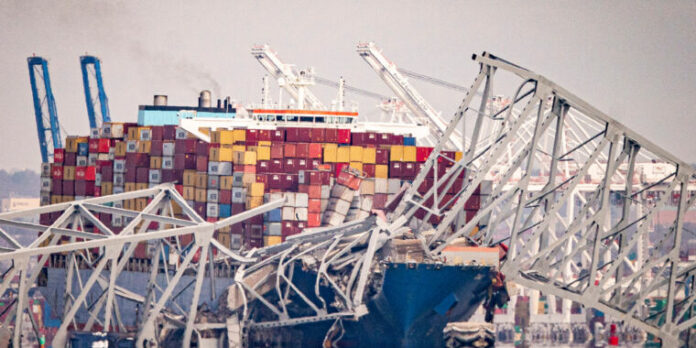A container ship rammed into the Francis Scott Key Bridge in Baltimore around 1:30 am on March 26, 2024, causing a portion of the bridge to collapse into Baltimore Harbor. Officials called the event a mass casualty and were searching for people in the waters of the busy port.
This event occurred less than a year after a portion of Interstate 95 collapsed in north Philadelphia during a truck fire. That disaster was initially expected to snarl traffic for months, but a temporary six-lane roadway was constructed in 12 days to serve motorists while a permanent overpass was rebuilt.
US cities often face similar challenges when routine wear and tear, natural disasters or major accidents damage roads and bridges. Transportation engineer Lee D. Han explains how planners, transit agencies, and city governments anticipate and manage these disruptions.
How do agencies plan for disruptions like this?
Planning is a central mission for state and metropolitan transportation agencies.
Traditional long-term planning focuses on anticipating and preparing for growing and shifting transportation demand patterns. These changes are driven by regional and national economic and population trends.
Shorter-term planning is about ensuring mobility and safety during service disruptions. These events can include construction, major scheduled events like music festivals, traffic incidents such as crashes and hazardous material spills, emergency evacuations, and events like the bridge collapse in Baltimore.
Agencies have limited resources, so they typically set priorities based on how likely a given scenario is, its potential adverse effects, and the countermeasures that officials have available.
For bridges, the Federal Highway Administration sets standards and requires states to carry out periodic inspections. In addition, agencies develop a detouring plan for each bridge in case of a structural failure or service disruption. In Baltimore, Key Bridge traffic will be routed through two tunnels that pass under the harbor, but trucks carrying hazardous materials will have to take longer detours.
Major bridges, such as those at Mississippi River crossings, are crucial to the nation’s economy and security. They require significant planning, commitment, and coordination between multiple agencies. There usually are multiple contingency plans in place to deal with immediate traffic control, incident response and field operations during longer-term bridge repair or reconstruction projects.
What are some major challenges of rerouting traffic?
Bridges are potential choke points in highway networks. When a bridge fails, traffic immediately stops and begins to flow elsewhere, even without a formal detouring plan. Transportation agencies need to build or find excess capacity before a bridge fails, so that the disrupted traffic has alternative routes.
This is usually manageable in major urban areas that have many parallel routes and bridges and built-in redundancy in their road networks. But for rural areas, failure of a major bridge can mean extra hours or even days of travel.
When traffic has to be rerouted off an interstate highway, it can cause safety and access problems. If large trucks are diverted to local streets that were not designed for such vehicles, they may get stuck on railroad tracks or in spaces too small for them to turn around. Heavy trucks can damage roads and bridges with low weight limits, and tall trucks may be too large to fit through low-clearance underpasses.
Successful rerouting requires a lot of coordination between agencies and jurisdictions. They may have to adjust road signal timing to deal with extra cars and changed traffic patterns. Local drivers may need to be directed away from these alternative routes to prevent major congestion.
It’s also important to communicate with navigation apps like Google Maps and Waze, which every driver has access to. Route choices that speed up individual trips may cause serious congestion if everyone decides to take the same alternate route and it doesn’t have enough capacity to handle the extra traffic.


